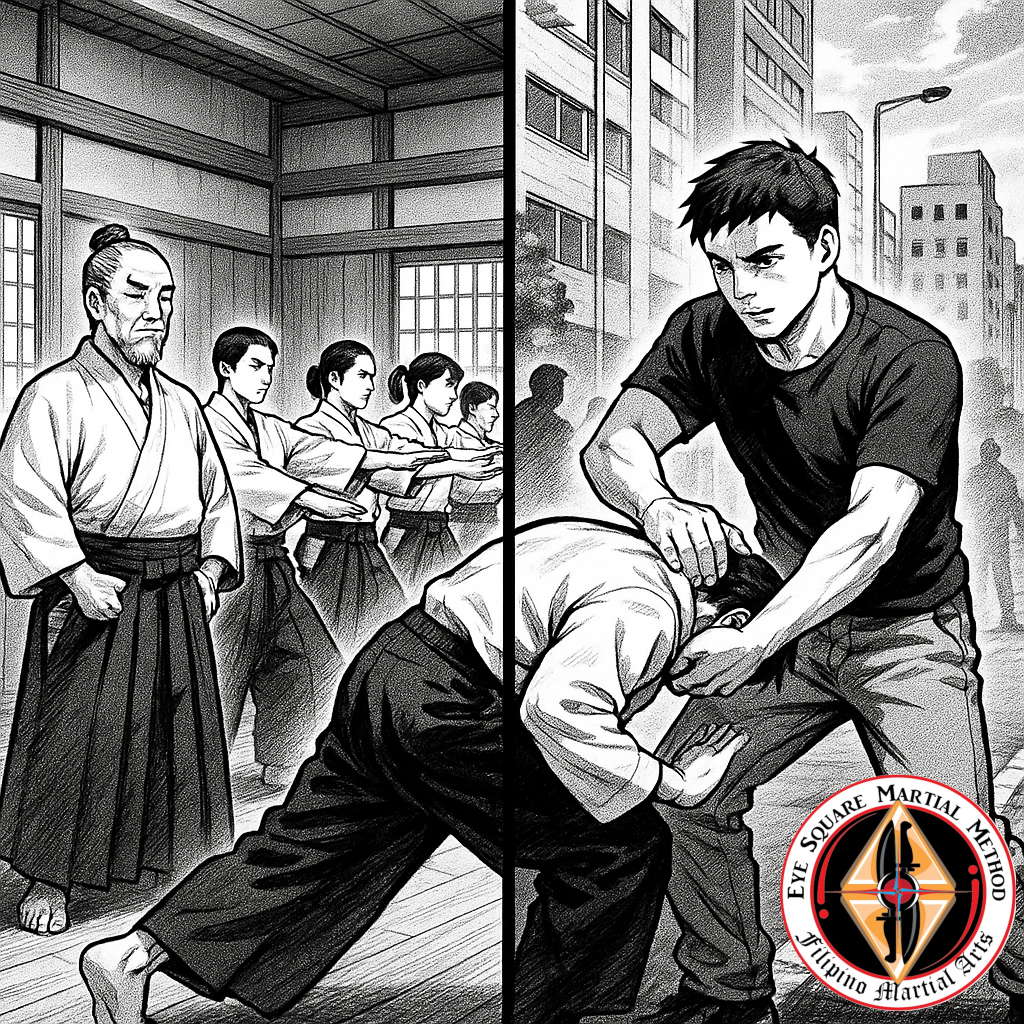We revere the colorful history, the lineage charts, and the ritual bows of traditional martial arts. But when it comes to real-world self-defense, ceremony and antiquated drills alone can leave you vulnerable. Here’s how blind devotion to tradition can hamper your effectiveness—and how you can blend time-honored values with modern, battle-tested methods.
1. The Allure of Tradition
- Cultural Legacy
Generations of practitioners have polished the forms you learn today. Those kata, etiquette, and rank systems carry stories of discipline and respect. - Sense of Identity
Being part of an unbroken chain—from founder to student—gives a powerful feeling of belonging and purpose. - Perceived Authority
A formal curriculum, colorful belts, and ancient scrolls often project legitimacy in the eyes of newcomers.
While tradition builds community and preserves heritage, it doesn’t guarantee that every technique still works against modern threats.
2. The Pitfalls of Blind Fidelity
- Outdated Techniques
- Weapon Evolution: Many classical defenses assume opponents carry swords or staffs—not smartphones, brass knuckles, or improvised tools.
- Rule-Bound Practice: Drills designed for ceremonial tournaments can leave gaps in real-world readiness.
- Lack of Pressure Testing
- Unrealistic Sparring: Light-contact or point-sparring fosters safety, not survival.
- Minimal Resistance: Repetitive form practice under slow, controlled conditions rarely prepares you for unpredictable, force-on-force encounters.
- Rigid Structures
- Resistance to Change: Schools that guard their “secret” techniques often discourage outside innovation—even if newer methods are demonstrably more efficient.
- One-Size-Fits-All: A single curriculum for every body type, age group, or threat scenario neglects individual needs and evolving realities.
3. Embracing Practical Adaptation
Effectiveness in self-defense means constantly refining your toolkit. Consider these modern practices:
- Cross-Training
Mix traditional arts (e.g., karate, aikido) with systems emphasizing sparring, ground work, or weapon defense (e.g., Brazilian Jiu-Jitsu, Krav Maga, FMA). - Scenario Drills
Simulate low-light, cramped spaces, multiple attackers, and improvised weapons. Use protective gear to pressure-test techniques safely. - Principle-Based Learning
Instead of memorizing fixed sequences, focus on concepts—distance management, leverage, timing—that apply across styles and situations. - Continuous Feedback
Record drills, review with partners, and debrief after each session. Adapt methods that succeed and shelve those that don’t.
4. Integrating Tradition with Innovation
You don’t have to throw out the old to embrace the new. Here’s how to bridge both worlds:
- Preserve Core Values
Respect, courtesy, and personal growth are timeless. Keep your dojo’s cultural rituals as a foundation. - Filter for Effectiveness
Evaluate each technique by asking: “Would I use this against a real attacker?” Retain what works; refine or discard what doesn’t. - Document Your Evolution
Keep a written or video log of new drills, adaptations, and insights—creating your own living lineage that future students can build upon.
Conclusion
Tradition gives martial arts soul, but survival demands adaptability. When ceremony eclipses practicality, you risk learning moves that look impressive but don’t hold up under pressure. By combining the best of both worlds—honoring your art’s heritage while rigorously testing and updating your skills—you become not just a custodian of history, but a fighter prepared for today’s realities.


Leave a Reply